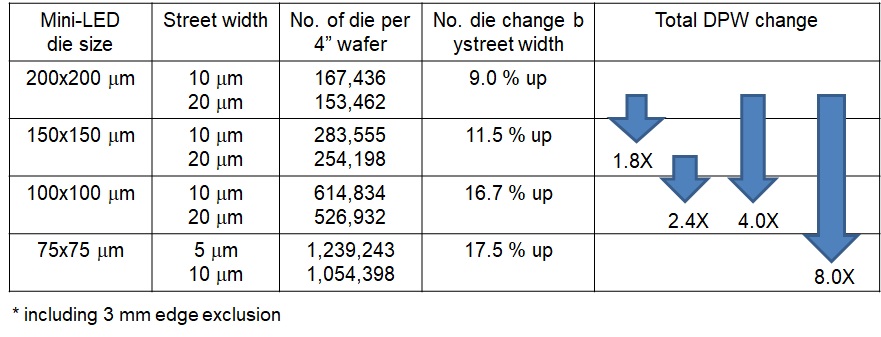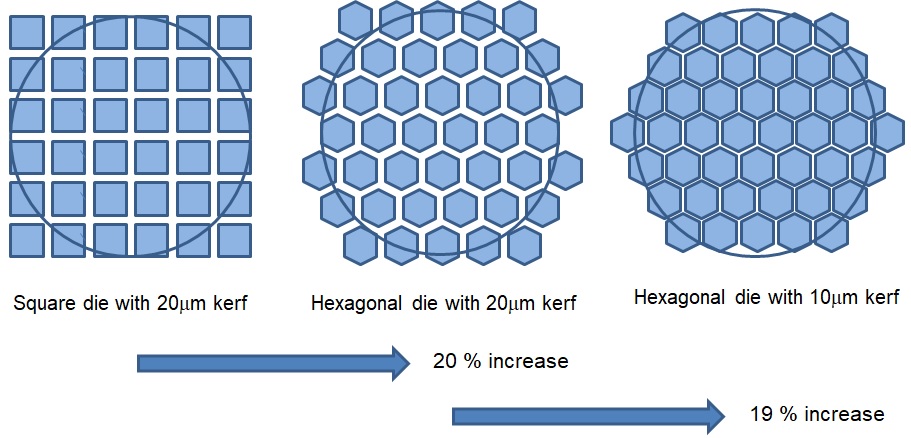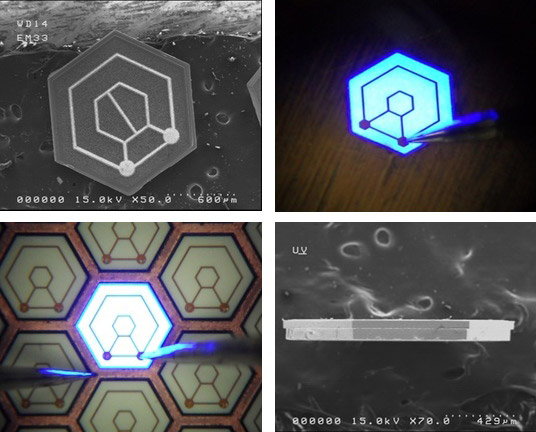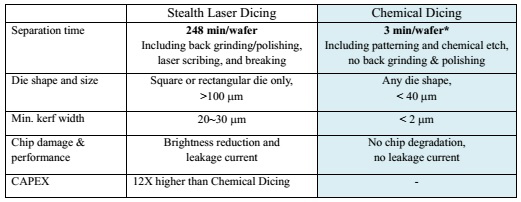News: LEDs
26 June 2020
Verticle develops chemical dicing for low-cost, high-performance mini-LEDs
LED and display technology specialist Verticle Inc of San Francisco, CA, USA notes that, to improve the picture quality of mini-LED displays by increasing local dimming zones, significantly more LEDs are required than in a conventional LED backlight. For example, 10,000 LEDs are used in a 12.9-inch iPad Pro screen. Consequently, lowering LED cost is the primary issue for the commercialization of mini-LED displays.
One of the most effective ways to reduce the manufacturing cost would be to shrink die size. However, this is limited by current die singulation technologies (e.g. the industry-standard stealth laser dicing process) due to chip damage and extremely long processing time. This is particularly true for LED die of less than 100mm.
Verticle has developed innovative die singulation technology called ‘Chemical Dicing’, which enables a reduction in mini-LED die size without chip damage. Using the chemical dicing process, dramatic cost reduction can be achieved through a substantial increase in die count per wafer. Furthermore, as shown in Table1, it can also result in narrower scribe street width.

Table 1. Increasing die per wafer by shrinking die size and street width (including 3mm edge exclusion).
This is attributed to a damage-free nature of the chemical dicing as it separates die by wet chemical etching the street line instead of thermal or mechanical methods that generate heat or acoustic shock waves. As a result, there is no damage around the chip edge, which means that distance between active areas and chip cutting edges can be less than 2mm. Therefore, active area can be enlarged, which results in more light output from the same size LED die.
As shown in Table 1, die size shrinking and street narrowing yield a dramatic increase in DPW (die per wafer), by up to 8x, compared with conventional flip-chip-based mini-LEDs, which have a larger die size and wider street widths.
Additional DPW increase can be obtained by chip shaping. Unlike conventional die singulation methods that can only separate die in a linear direction (i.e. only able to separate either square or rectangular die), chemical dicing enables free-shape die (e.g. hexagonal) formation and singulation. Hexagonal die can increase DPW by more than 20% due to enhanced tiling efficiency and increased usable wafer area (Figure 1).

Figure 1. Increased die per wafer by chip shaping and narrowing street width.

Figure 2. First hexagonal LED die separated by chemical dicing.
Using this unique chemical dicing, Verticle was able to fabricate the first hexagonal die (Figure 2). The hexagonal shape symmetry can help to achieve better current spreading, which results in higher light output than square or rectangular die. Additionally, hexagonal die light output is enhanced after packaging too. A hexagonal die produces a beam profile that is much closer to the circular shape of a circular lens used in optics design. In contrast, the beam profile of the typical square or rectangular die, when combined with a circular lens, is typically distorted.
Moreover, multiple wafers in one batch can be etched simultaneously, resulting in die singulation throughputs that are 500x greater than stealth laser dicing, says Vertical (see Table 2).

Table 2.Benefits of chemical dicing (based on 100μm x 100μm die, 2-inch wafer,100 wafers x 2”-wafer/lot, 10min/lot = 6 sec/wafer) compared with stealth laser dicing. Chemical dicing is 83x faster than stealth laser dicing for 100μm x 100μm die. Benefits include faster dicing speed and throughputs with increasing number of loading wafers per batch and shrinking die size. Also, chemical dicing speed is independent of die size.
To contact, e-mail myungcyoo911@gmail.com
Verticle extends Cu-base hexagonal LED chip range to UV
Verticle announces mass production of first hexagonal LED chip









